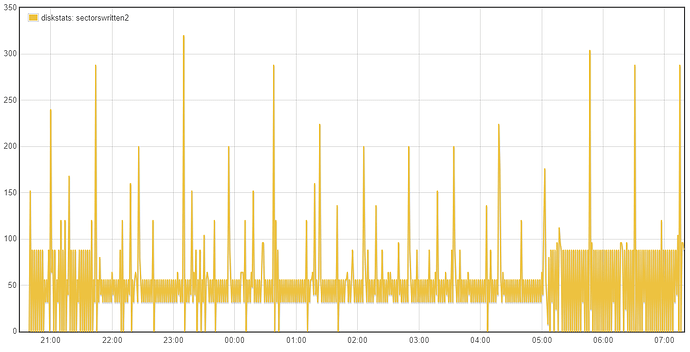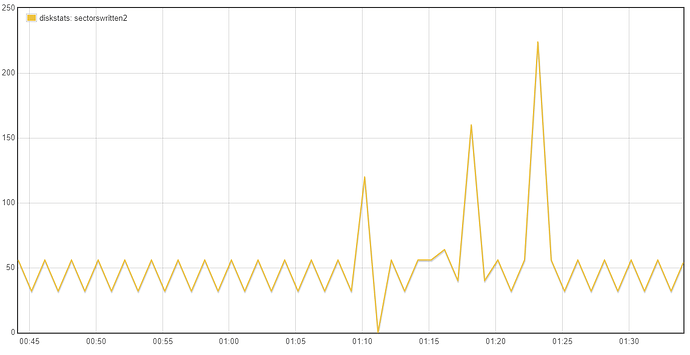I ran these stats overnight. Running a standard EmonSD on an EmonPi with just a CT but picking up RF from my other setup. Using the modified emonhub logging as mentioned elsewhere. emonSD next steps: emonhub logging - #13 by borpin
Overnight.
What might be interesting is plotting where feedwriter is writing and what volume. I cannot explain why for some parts of the period the minimum was not zero then from 05:00 it was (not me guv!)! The spike is probably a logrotate of emonhub log. Could it be feedwriter is not exactly 60s?
A close up of the writes as a result of the logrotation at midnight UTC. It was 3 stage rotation, concatination of latest log, a 1.gz file rotated to 2.gz and a new 1.gz file created. [edit]Log compression is about 10:1 - first compressed log was not 24Hrs
-rw-r--r-- 1 root root 19M Apr 22 06:58 /home/pi/data/emonhub-log/emonhub.log
-rw-r--r-- 1 root root 6.3M Apr 22 00:21 /home/pi/data/emonhub-log/emonhub.log.1.gz
-rw-r--r-- 1 root root 792K Apr 21 00:14 /home/pi/data/emonhub-log/emonhub.log.2.gz


